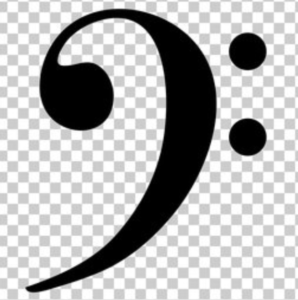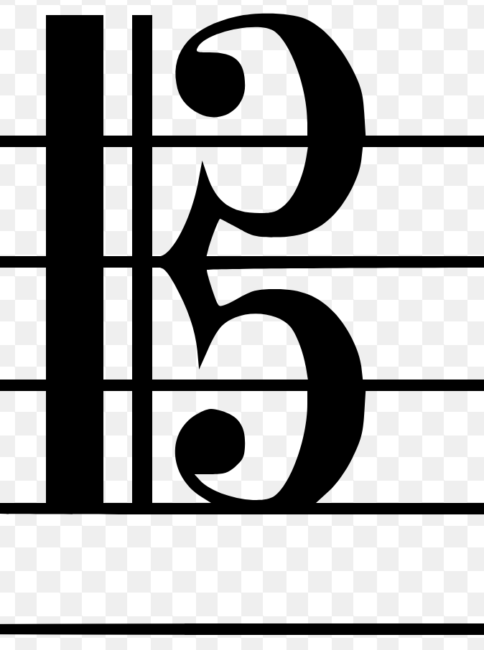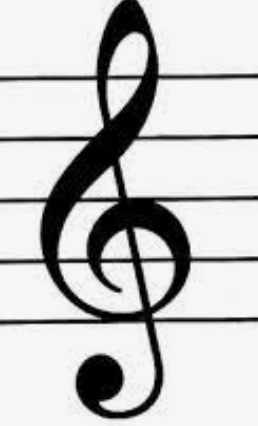Clefs
Some explanation of how music for the cello is notated
The music for cello is commonly written in three clefs, bass (or F clef), tenor (or C clef), and treble (or G clef). When we first begin the cello, our music is in bass clef, as it neatly contains all of the notes in first position. As we develop, we begin to play a larger range of pitches, and the notes begin to go above the top notes of the bass clef. Composers use these other clefs in order to avoid lots of additional lines above the five lines of the staff (leger lines) that would be required in order to stay in the bass clef. This makes reading music easier, once you are familiar with these clefs. Then there is the “false” treble clef…

Bass Clef
Bass clef is known as F clef because the two dots to the right outline the note F. In bass clef, Middle C is on leger line above the staff. Bass clef is used for the lower register of the instrument, and this is similar to the bass human voice. The lowest note on the cello is the open C string, and that is noted two leger lines below the staff, and the bass clef is commonly used to notate from low C up to G above middle C, which is three leger lines above the staff.

Tenor Clef
The tenor clef is known as a C clef because the center of the clef is on the note middle C. In bass clef, this note is one leger line above the staff, and in treble clef it is one line below the top line of the staff. Tenor clef makes it easier to notate the cello’s mid-high range without a lot of leger lines. The notes in tenor clef are written a fifth lower than they appear in the bass clef. My first cello teacher introduced it to me in this way: imagine your A string is broken and you have to play everything on the D string (only it’s really your A string). You can try playing beginner level music that you already have which should be on the A string up to F above middle C. Play it on the D string. This will give you a mental image of the fingerboard for tenor clef, as the difference is a fifth, the same interval we tune our strings to. So when you see that F 2 lines above bass clef and you play it on the D string, it is right next to the C that is 2 lines above Tenor clef, so the notes look the same and relate to the notes around them the same way, you are just playing them a little further to the left.

Treble Clef
As mentioned before, middle C is one leger above the bass clef staff, but that note is one leger line below the the staff in treble clef, and it is used when we are required to play in the instrument’s highest registers. It is called the G clef because the circular part of the shape of the clef surrounds the line where G is written within the staff (the second line up from the bottom of the staff).
“False” Treble Clef
Certain publishers of the nineteenth century used the “false treble” clef, where the treble clef is notated an octave higher than it is played. I was involved in a conversation amongst music engravers regarding it the the other day, and it turns out that there is a specific convention using treble clef for cello during this era amongst publishers (almost all German). If the treble was employed in the context of a passage that also used tenor clef, it was to be played as written, if it was isolated (not in the context of a passage with tenor clef), then the “octave lower than written” applies. I’m sure it was a convenience to whoever was writing down music, but I hate it…
